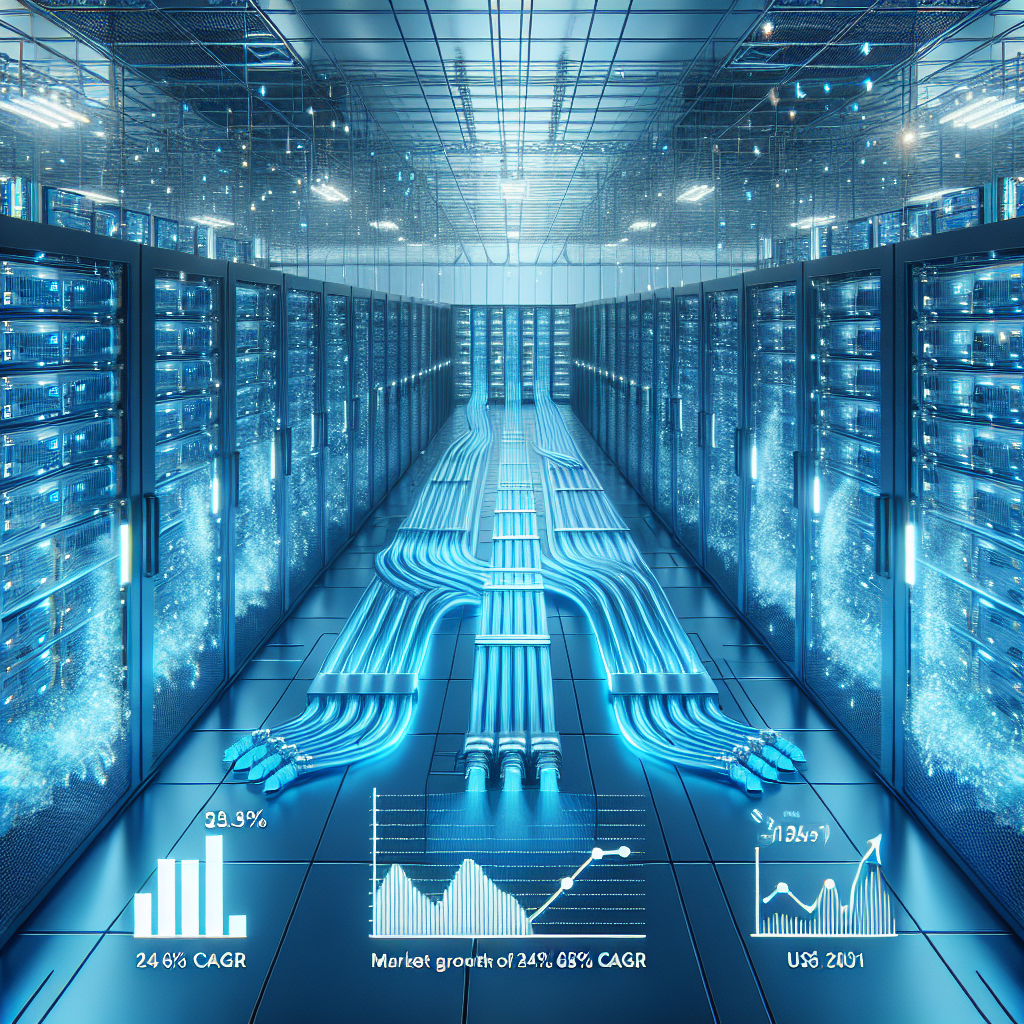The data center liquid cooling market is experiencing significant growth, with a projected CAGR of 24.6% from 2024 to 2031. Valued at US$ 4.1 billion in 2024, the market is expected to reach US$ 19.4 billion by 2031. This growth is driven by the increasing demand for energy-efficient cooling solutions in data centers, as traditional air cooling systems struggle to meet the needs of high-performance computing and dense data center operations. Liquid cooling technologies, such as immersion and cold plate cooling, offer superior energy efficiency, with potential energy savings of up to 40%.
North America is leading the market in liquid cooling adoption, particularly among cloud providers and hyperscale data centers. The rise of edge computing and sustainability goals are further fueling the demand for liquid cooling solutions. As data centers continue to play a crucial role in modern technology, the need for robust cooling solutions becomes more apparent. Air cooling systems have historically been used in data centers, but they often struggle to efficiently manage the heat generated by powerful servers.
Liquid cooling systems have emerged as a more effective solution for transferring heat away from sensitive equipment. These systems can handle higher heat densities, which is essential as data centers process more data and run more sophisticated applications. The market for liquid cooling is expanding rapidly, driven by technological advancements and the growing demand for data storage, high-performance computing, and artificial intelligence.
Key technological advancements driving the growth of the data center liquid cooling market include direct-to-chip cooling, immersion cooling, and loop-based cooling systems. Direct-to-chip cooling involves applying coolant directly to chips, allowing for precise temperature regulation at the component level. Immersion cooling submerges components or entire servers in thermally conductive liquid, maximizing cooling performance. Loop-based cooling systems circulate coolant in a closed loop between the heat source and cooling unit, ensuring effective heat management and energy efficiency.
Energy consumption and environmental sustainability are critical considerations in the data center industry. Liquid cooling systems offer superior energy efficiency compared to air cooling systems, reducing operational costs and carbon emissions. With the global push for sustainability and energy efficiency, liquid cooling technologies are becoming increasingly popular among data center operators.
The North American region is expected to dominate the data center liquid cooling market by 2031, driven by the presence of leading technology companies and government initiatives promoting energy efficiency. Europe and the Asia Pacific region are also expected to see significant growth in the adoption of liquid cooling solutions. While challenges such as initial investment costs and integration with existing infrastructure exist, market players have opportunities to innovate and offer solutions that address these barriers.
In conclusion, the data center liquid cooling market is on track for rapid growth, driven by technological advancements, energy efficiency concerns, and the increasing demand for high-performance computing. As companies and governments prioritize sustainability, liquid cooling solutions will play a crucial role in shaping the future of data center operations. To stay ahead of the curve, businesses must embrace the latest cooling technologies to meet the evolving demands of the digital landscape.

